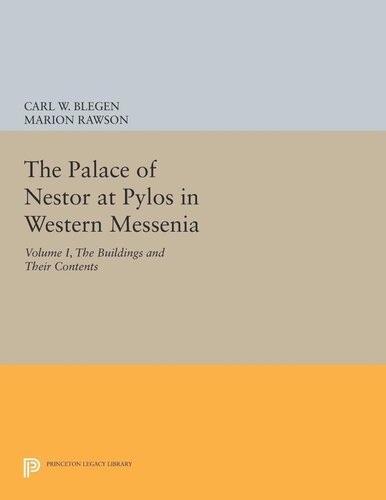

Most ebook files are in PDF format, so you can easily read them using various software such as Foxit Reader or directly on the Google Chrome browser.
Some ebook files are released by publishers in other formats such as .awz, .mobi, .epub, .fb2, etc. You may need to install specific software to read these formats on mobile/PC, such as Calibre.
Please read the tutorial at this link: https://ebookbell.com/faq
We offer FREE conversion to the popular formats you request; however, this may take some time. Therefore, right after payment, please email us, and we will try to provide the service as quickly as possible.
For some exceptional file formats or broken links (if any), please refrain from opening any disputes. Instead, email us first, and we will try to assist within a maximum of 6 hours.
EbookBell Team

4.8
24 reviewsHomer's King Nestor of "sandy Pylas" passes from legend into history in this first volume of the report of excavations on a hill called Englianos in Messenia, conducted by the Archaeological Expedition of the University of Cincinnati. The palace with its contents and the surrounding lower town indicate that this was an administrative center and the capital of a prosperous Mycenaean kingdom. The name Pylos appears on more than fifty tablets, and there can be no doubt that this was the Messenian abode of the Nestor of Greek tradition. Destroyed by fire at the end of the 13th century B.C., and never reoccupied, the palace has lain for more than 3,000 years in ruins. During the annual campaigns of the Expedition between 1952 and 1964, it emerged as a complex of four separate structures of considerable size. The floors, stumps of wall bearing plaster with painted decorations, doorways, and other evidence helped to identify gateways, courts, porticoes, vestibules, corridors, a great throne room, storerooms, a wine magazine, pantries filled with pottery, a bathroom, stairways, and a repair shop. Except for the tablets, seals, and frescoes, which will be described in other volumes, all the finds are recorded and illustrated with plans, drawings, and photographs.
Originally published in 1966.
The Princeton Legacy Library uses the latest print-on-demand technology to again make available previously out-of-print books from the distinguished backlist of Princeton University Press. These editions preserve the original texts of these important books while presenting them in durable paperback and hardcover editions. The goal of the Princeton Legacy Library is to vastly increase access to the rich scholarly heritage found in the thousands of books published by Princeton University Press since its founding in 1905.